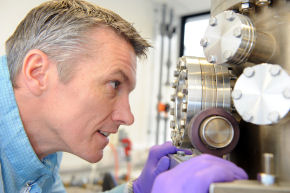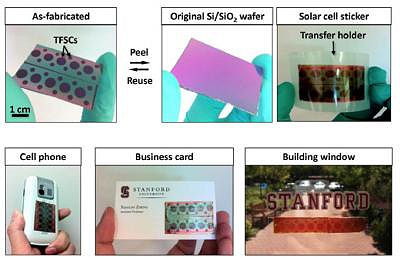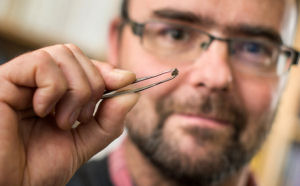
A solar technology breakthrough by UK scientists means portable electronic devices such as phones, cameras, and e-book readers could soon have credit card-sized solar cells built-in, allowing them to be recharged on the move.
The researchers, from the University of Warwick, say they have created an organic solar cell that generates a sufficiently high voltage to recharge a lithium-ion battery directly, without the need to connect multiple individual cells in series. Producing a high voltage from a single small collector means the cell can be easily incorporated into consumer devices where size is a key factor.
Details of the new organic photovoltaic (OPV) cells, appearing in the journal Advanced Energy Materials, indicate that they will be cheap to manufacture and lightweight, and perhaps most importantly, compatible with flexible manufacturing substrates. Additionally, the technology produces usable voltage levels even when the module is in low light levels or partial shading.
The scientists, from the University’s Department of Chemistry, have demonstrated a cell with an open circuit voltage of over 7V which delivers maximum power at more than the 4.2V needed to power a standard lithium ion battery.
“We have taken a big step towards cheap-to-make solar chargers which can top up your devices whenever they are being used – both indoors and out,” said Tim Jones (pictured), one of the lead researchers. “A small light-weight solar charger no bigger than a credit card can be fitted to the battery of an e-book reader, for example, and constantly top it up with power while you are reading it – even if you are sitting inside on the sofa.”
He added that the next step is to extend this technology outside the laboratory to make cheap OPV chargers available on a commercial scale. The commercial vehicle for the venture – spin-off company Molecular Solar – is soon to launch a new round of fundraising to support the commercialization of the technology.
Related:
Discuss this article in our forum
MIT scientists create self-assembling solar cell
Novel solar cells utilize light’s magnetic properties
Virus improves solar cell efficiency
Solar power’s dirty secret: skyrocketing lead pollution


















Comments are closed.